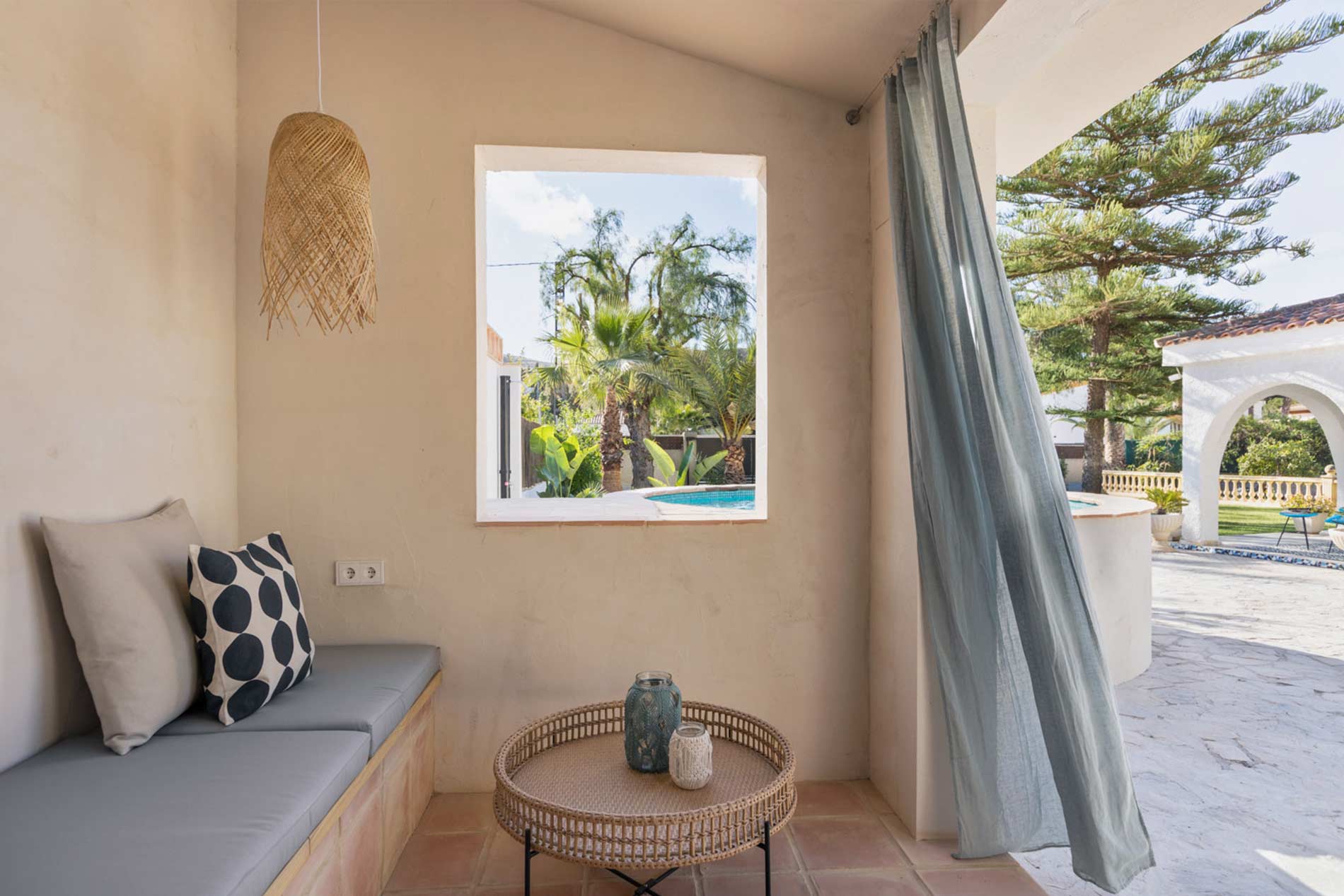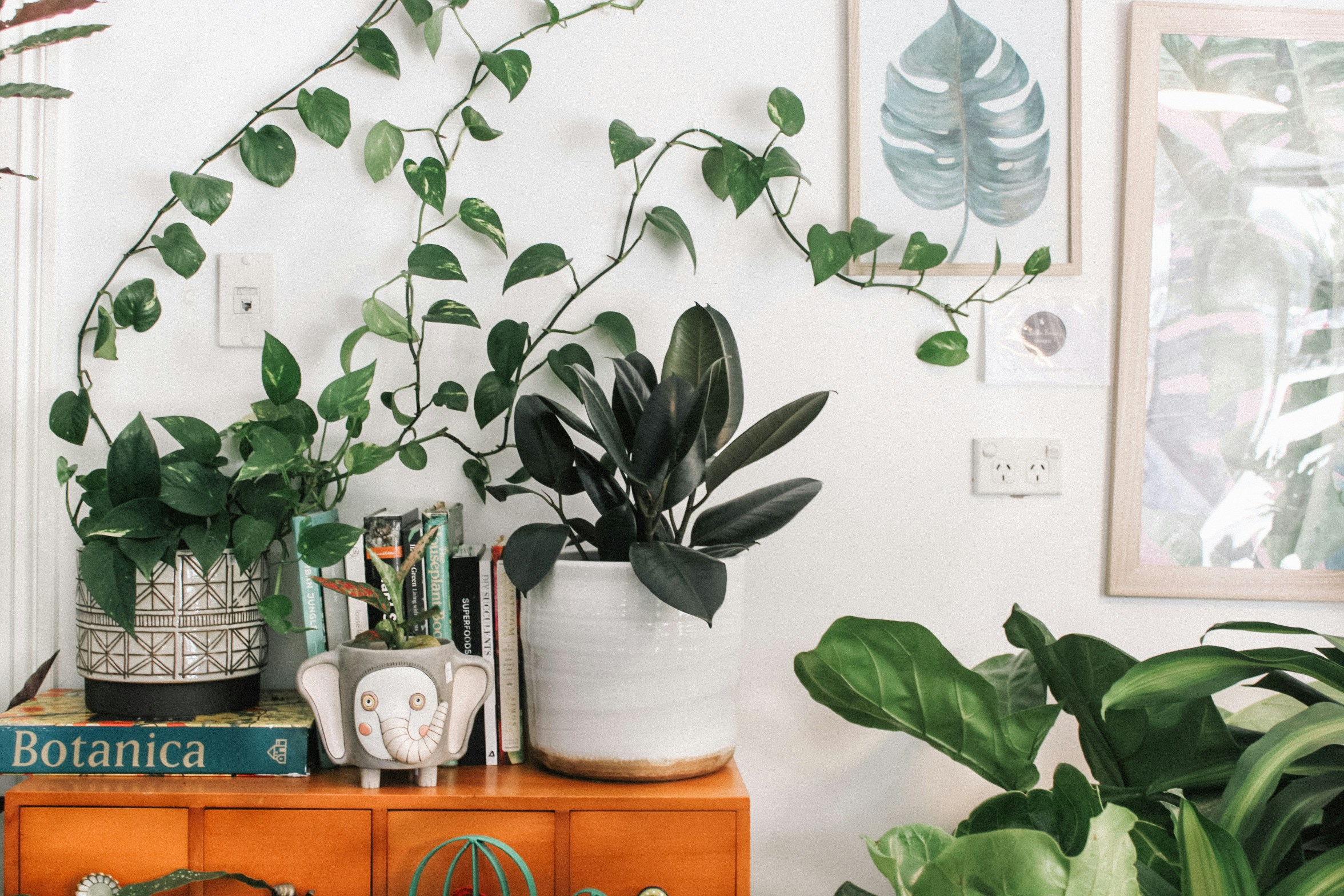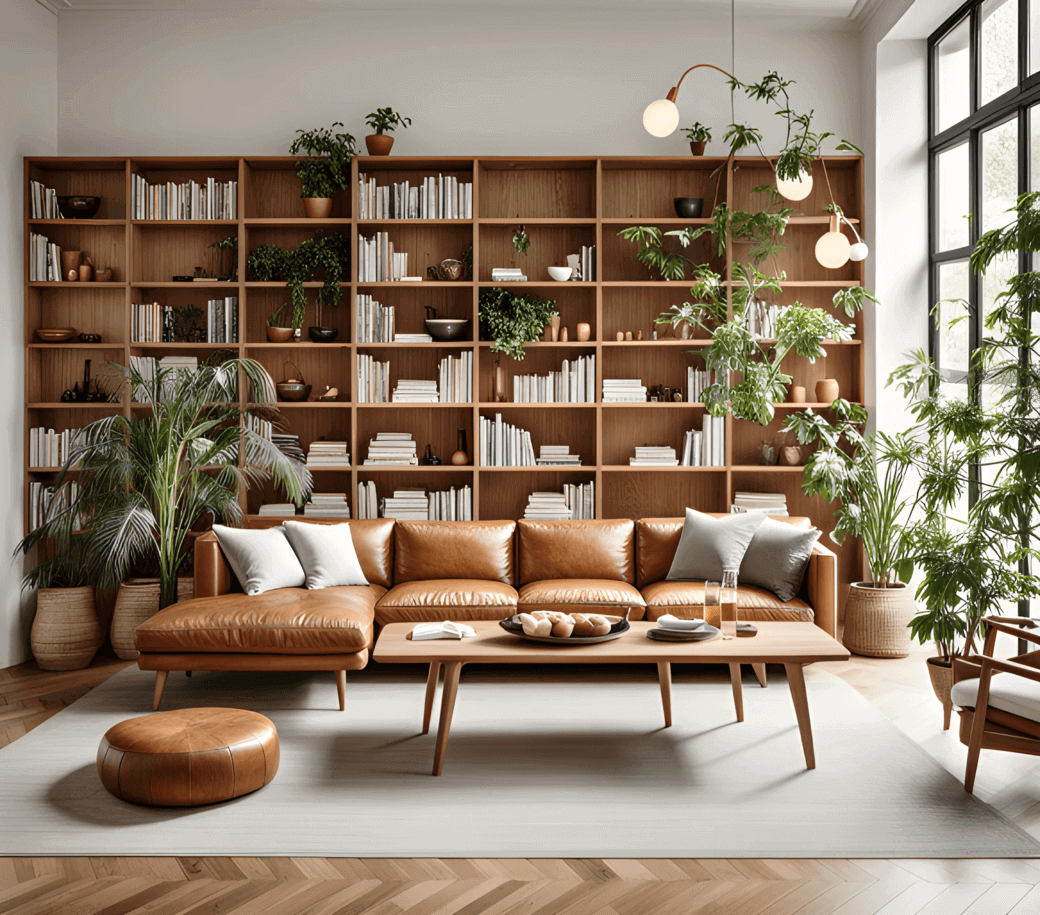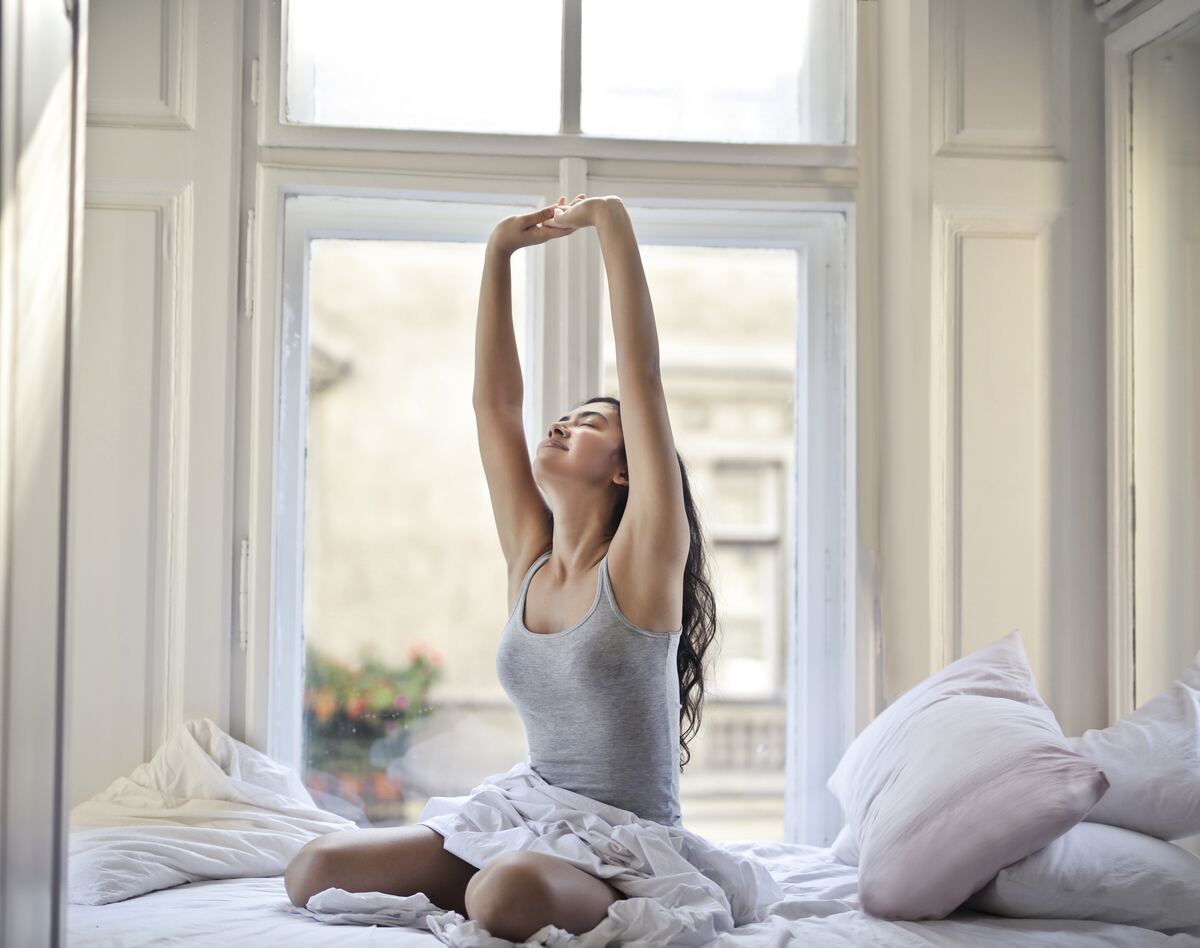Are you looking for a new design trend that will not only beautify your spaces, but also improve your health and well-being? Then bio-interiorism is the answer! In this article you will discover why this design philosophy of the future is gaining popularity and how you can apply it in your home. Get ready to immerse yourself in a world where nature becomes an integral part of your interiors, promoting sustainability, connection with the natural environment and a sense of calm and harmony. Welcome to the fascinating world of biointerior design!
What is Biointeriorism and why is it gaining popularity?
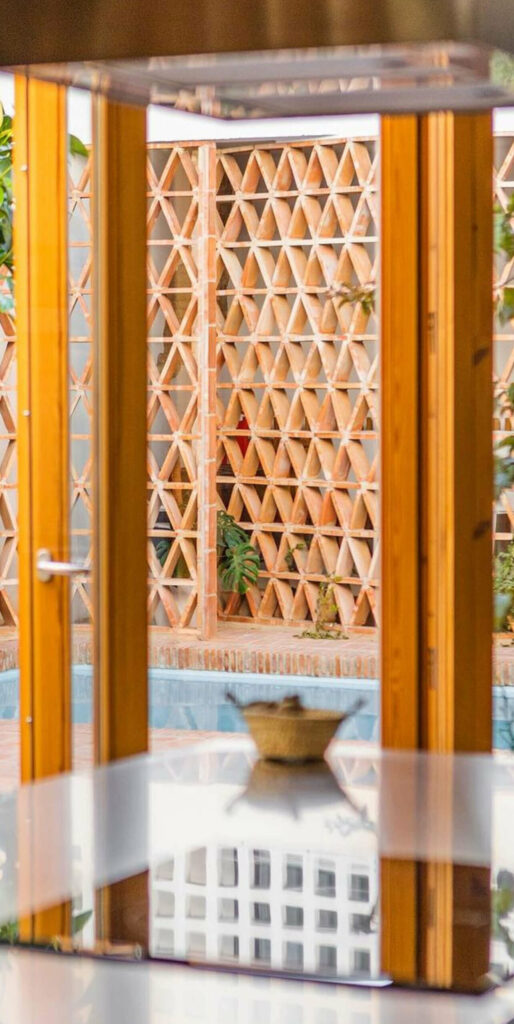
Biointeriorism is much more than just a design trend, it is a philosophy that seeks to connect people with nature in their interior spaces. It is about creating healthy and balanced environments, where natural materials and plants play a key role.
This trend has become increasingly popular due to its conscious and sustainable approach. In a world dominated by fast pace and technology, biointeriorism invites us to turn our gaze towards the natural. It allows us to escape from daily stress and find harmony in our environment.
In addition, biointeriorism offers numerous benefits for our health and well-being. For example, by integrating plants into our indoor spaces, we can improve air quality by filtering toxins and increasing oxygen levels. This not only contributes to reducing respiratory diseases, but also promotes a feeling of freshness and vitality.
Another important aspect is how biointerior design can help us reduce stress and promote relaxation. The presence of natural elements such as wood or stone connects us with the earth, providing a sense of calm and serenity. In addition, soft colors inspired by nature can have a positive effect on our emotional state.
In terms of productivity and concentration, studies have shown that being surrounded by natural elements can stimulate our mind and increase our ability to focus on important tasks.
These are just a few reasons why biointeriorism is gaining popularity in the world of interior design. It is a trend
The philosophy behind Biointeriorism: connecting with nature in interior design.
The philosophy behind Biointeriorism focuses on connecting with nature through interior design. This approach seeks to create spaces that promote wellness and balance between humans and their natural environment.
Biointeriorism recognizes the importance of being in harmony with nature, as it has a significant impact on our physical and mental health. By incorporating natural elements such as plants, sustainable materials and natural light, a healthier and more welcoming interior environment is created.
This design style invites us to move away from rigid and artificial structures to embrace a more organic and fluid aesthetic. It seeks to integrate soft shapes, earthy colors and even soothing sounds to create a complete sensory experience.
By connecting with nature through Biointeriorism, we can experience a sense of calm and inner peace. The presence of natural elements helps us reduce stress, improve our mood and increase our productivity.
In addition, this type of conscious design also encourages greater respect for the environment by using sustainable materials and renewable energy. Biointeriorism encourages us to take care of our planet while creating beautiful and functional spaces.
In short, Biointeriorism is much more than a passing trend; it is a philosophy that seeks to reestablish our lost connection with nature through conscious design. By applying it in our homes or offices, we can enjoy healthy environments where our physical and emotional needs are met.
Health and wellness benefits of Biointeriorism
Biointerior design goes beyond aesthetics and decoration, it has significant benefits for our health and well-being. By connecting with nature in interior design, we can create spaces that promote a healthier lifestyle.
One of the advantages of Biointeriorism is its ability to improve the air quality in our homes. By using natural materials and avoiding toxic chemicals in furniture and finishes, we reduce the presence of substances harmful to our respiratory health. In addition, incorporating plants in interior design helps purify the air by absorbing carbon dioxide and releasing fresh oxygen.
Another important aspect is how Biointeriorism can reduce stress and promote relaxation. Visual contact with natural elements such as plants or natural light has a calming effect on our minds, which contributes to lower anxiety levels. In addition, soft colors inspired by nature convey tranquility and harmony.
Furthermore, applying the principles of Biointeriorism can increase our productivity and concentration. Connecting with spaces inspired by natural elements helps us feel more connected to our environment and stimulates our creative brain. This translates into greater mental clarity, better decision making and increased focus while working or studying.
In short, Biointeriorism not only creates beautiful environments but also fosters a healthy atmosphere where we can thrive physically and emotionally. Connecting with nature within our homes is fundamental to our well-being and the conscious design of the future.
How Biointeriorism can improve the air quality in your home
Biointeriorism is much more than just a design trend, it also has a direct impact on our health and well-being. One of the main advantages of this philosophy is its ability to improve the air quality in our homes.
One way biointeriorism achieves this is through the use of plants as an integral part of the design. Plants not only add beauty and life to interior spaces, but they also act as natural air purifiers by filtering toxins and releasing fresh oxygen. This means that by incorporating more plants into our homes, we can enjoy cleaner, healthier air.
In addition to plants, the conscious use of natural materials also contributes to improved indoor air quality. Opting for furniture and wall coverings made from sustainable, toxic-free materials reduces the presence of volatile organic compounds (VOCs) in our environment, which in turn improves our respiratory health.
Another way biointeriorism promotes a pollutant-free environment is by avoiding synthetic chemicals during the decorating process. Carefully choosing eco-friendly, VOC-free paints or organic products to clean our spaces allows us to maintain an environment free of agents that are harmful to our respiratory health.
Biointeriorism offers creative solutions to improve indoor air quality in our homes. Whether through the strategic integration of purifying plants or by using natural and toxic-free materials, this trend is transforming the way we live and work.
How Biointeriorism can reduce stress and promote relaxation
Stress is a daily reality for many people in today's society. The fast pace of life, work and personal responsibilities, and constant exposure to digital stimuli can affect our mental and emotional health. That is why biointeriorism presents itself as an innovative solution to reduce stress and promote relaxation in our interior spaces.
One of the ways biointeriorism can help us reduce stress is by integrating natural elements into our environment. Soft colors inspired by nature, such as earthy tones and serene greens, have a calming effect on our minds and help us create a peaceful environment.
In addition, incorporating live plants within the interior space also helps to reduce stress. Plants not only add aesthetic beauty to the environment, but also improve air quality by filtering out harmful toxins present in our homes or offices. Scientific studies have shown that having plants in our environment reduces anxiety levels and improves our overall mood.
Another key aspect of biointerior design to reduce stress is to make the most of natural light. Adequate lighting is critical to creating a relaxing environment. By allowing enough natural light to enter during the day, we can improve our physical and emotional well-being.
Biointeriorism offers effective solutions to combat daily stress through techniques based on connecting with nature within our interior spaces. By integrating natural elements, such as colors inspired by nature
How Biointeriorism can increase productivity and concentration
Biointeriorism not only has benefits for our health and well-being, but it can also improve our productivity and concentration at home. How is this possible? Here's how.
One of the ways Biointeriorism can increase productivity is through the use of natural and soft colors in interior spaces. Green, blue and earth tones can help us feel more relaxed and calm, allowing us to concentrate better on our daily tasks.
In addition, incorporating natural elements such as live plants or images of nature can have a positive impact on our mood and energy level. Studies have shown that these elements can reduce stress and anxiety levels, allowing us to stay focused for longer.
Another way Biointeriorism can increase productivity is through proper space design. By creating specific areas for different activities (such as working, resting or exercising), we can optimize our environment to maximize our efficiency.
In addition, natural lighting plays a key role in our ability to concentrate. Biointeriorism seeks to maximize available natural light through the strategic use of large windows or skylights. This helps minimize eye fatigue caused by poor artificial lighting and keeps us alert throughout the day.
Biointeriorism offers a number of strategies specifically designed to enhance our productivity and concentration within the home. Whether it's through soft colors, natural elements, or appropriate lighting
Ideas to apply Biointeriorism in your home
Biointeriorism is a design trend that seeks to connect people with nature inside their homes. If you are interested in applying this philosophy in your own space, here are some ideas to get you started.
A simple way to incorporate Biointeriorism is to use natural materials in your furniture and wall coverings. Opt for recycled or certified woods, natural stone or even mud walls. These elements will not only add warmth and beauty to your home, but will also reduce the environmental impact.
Integrating plants and natural elements into your decor is another effective way to implement Biointeriorism. Place pots with different green species around your home and create corners full of life. In addition to the visual effect, plants purify the air, thus improving air quality.
Creating bright and airy spaces is also fundamental in Biointeriorism. Open curtains during the day to take advantage of natural light and try to maximize cross ventilation by opening windows strategically. This way you will achieve a fresh and healthy environment.
If you want to take it a step further, you can consider installing eco-efficient systems such as solar panels or smart devices to control lighting and automated climate control.
Remember that every little change counts when it comes to adopting a biointeriorist style in your home. It doesn't matter if you start small or decide to transform it completely from scratch; the important thing is to be conscious of your own and the planet's well-being. Go for a touch of nature!
The importance of natural materials in Biointeriorism
The importance of natural materials in Biointeriorism lies in their ability to create a healthy and harmonious environment. By using organic materials such as wood, bamboo or cork, we promote a deeper connection with nature within our homes.
These materials are not only aesthetically appealing, but also have specific benefits for our health and well-being. For example, wood has antibacterial properties and can help regulate the humidity of the interior space, thus creating a more comfortable and healthy environment.
In addition, by opting for natural materials we are reducing our environmental impact. The renewable resources used in these materials regenerate faster than other synthetic or petroleum-derived products. This means we can enjoy beautiful design without irreparably damaging our planet.
Integrating these natural elements into our interior spaces not only contributes to our own connection with nature, but also fosters greater environmental awareness. It is important to remember that our individual choices can have a significant impact on global sustainability.
By using natural materials in Biointeriorism we are creating healthier environments for both ourselves and our planet. These elements allow us to connect with natural beauty while making conscious choices about how we design our interior spaces.
Integrating plants and natural elements into the decoration
Integrating plants and natural elements in the decoration is one of the keys to Biointeriorism. Not only do they add a touch of freshness and beauty to spaces, but they also have numerous benefits for our health and well-being. Plants, for example, purify the air by absorbing carbon dioxide and releasing oxygen. They also help humidify the environment, which is especially helpful during the drier months.
But it's not just a matter of adding a few pots here and there. To achieve a truly bio-interior design, it's important to carefully choose the right species that suit the indoor environment. Some popular choices include ferns, palms or succulents.
In addition to plants, we can also incorporate other natural elements into the décor such as recycled wood or furniture made from sustainable materials like bamboo or cork. These materials are not only aesthetically appealing but also convey a sense of connection to nature.
A creative way to integrate natural elements into the décor is by strategically placing stones or crystals in different spaces of the home. These can provide positive energy and balance to our interior environments.
Integrating plants and natural elements in the decoration is an excellent way to create a cozy and healthy atmosphere inside the home. Biointeriorism invites us to reconnect with nature even when we are inside our homes or offices. So why not give it a try and experience the benefits of this conscious approach to design?
Creating light and airy spaces with Biointeriorism
Creating bright and airy spaces is one of the main objectives of biointeriorism, a trend in interior design that seeks to connect with nature to improve our well-being. In this sense, the strategic use of natural light and adequate ventilation are fundamental to achieve healthier and more pleasant environments.
To begin with, it is important to make the most of natural lighting in our spaces. This means making sure that the windows are clean and clear, allowing as much sunlight as possible to enter during the day. In addition, we can use translucent curtains or blinds that gently filter the light without blocking it completely.
Another key aspect is to choose light colors and neutral tones for walls and furniture. These colors reflect natural light better, making spaces appear larger and brighter. Also, opting for glossy or satin finishes instead of matte can help to further increase luminosity.
We should also pay attention to the distribution of furniture and avoid obstructing natural light sources. Placing mirrors strategically can help us to reflect and multiply the luminous effect throughout the room.
As for ventilation, regularly opening the windows allows us to renew the interior air and eliminate any accumulated humidity or bad odors. Whenever possible, we can also incorporate elements such as sliding doors or translucent panels to facilitate proper air circulation.
In short, creating bright and airy spaces with biointeriorism is key to improving our
Biointeriorism as a sustainable and conscious trend
Biointeriorism has become an increasingly popular trend in interior design, and it's not hard to understand why. This philosophy combines aesthetic beauty with sustainability and environmental awareness, creating spaces that are both visually appealing and ecologically responsible.
One of the main characteristics of Biointeriorism is its focus on using natural, sustainable materials. This means avoiding toxic chemicals and opting for options that are healthier for us and the planet. From furniture made with certified woods to VOC (volatile organic compound) free paints, Biointeriorism invites us to create a home that is safe and respectful of our environment.
In addition, Biointeriorism encourages us to bring natural elements inside our spaces. Plants are a fundamental part of this trend, as they not only add life and beauty to our homes, but also improve air quality by filtering harmful toxins. There is nothing more refreshing than walking into a room full of lush plants.
Another important aspect of Biointeriorism is to create bright and airy environments. This is achieved through the strategic use of large windows, light colors and intelligent furniture layout. A well-lit space can have a significant impact on our mental and emotional health, promoting calmness and reducing stress.
Biointeriorism stands out as a conscious and inspiring way to design our interior spaces. By embracing this trend, we will not only be
How Biointeriorism promotes sustainability in interior design
Biointeriorism stands out for its sustainable and conscious approach to interior design, making it a highly relevant trend for those looking to create greener, more environmentally friendly spaces. This design style is based on the use of natural materials, the integration of plants and living elements, as well as maximizing the use of natural light.
One way Biointeriorism promotes sustainability is through the use of eco-friendly materials. Instead of using harmful synthetics or chemicals, this style prioritizes natural and renewable materials. This not only reduces the environmental impact during production, but also provides a healthier indoor environment by avoiding toxic substances.
In addition, Biointeriorism promotes the efficient use of resources such as water and energy. Through intelligent design and the incorporation of eco-efficient technology, this style seeks to minimize unnecessary consumption and reduce harmful emissions.
Another way this type of design promotes sustainability is through harmonious reintegration with nature. By including living plants within the interior space, it enhances both aesthetically and functionally: plants help purify the air by absorbing carbon dioxide while releasing fresh oxygen.
In conclusion, thanks to its philosophy centered on ecological values and respectful of our personal health and well-being, Biointeriorism actively contributes towards a more sustainable future in interior design.
The positive impact of Biointeriorism on the environment
The positive impact of Biointeriorism on the environment is one of the key reasons why this design trend is gaining popularity. Biointeriorism is based on the idea of creating interior spaces that are in harmony with nature, using sustainable materials and promoting environmentally friendly practices.
One way in which Biointeriorism has a positive impact is through the use of natural and sustainable materials. Instead of using toxic chemicals or synthetic materials, organic elements such as certified wood or eco-friendly coatings are prioritized. This not only reduces the consumption of non-renewable resources, but also reduces the amount of harmful emissions released during the manufacture and disposal of these products.
Another way Biointeriorism benefits the environment is by encouraging recycling and reuse. Instead of discarding furniture or other decorative objects, they are given a second life through the creative process known as upcycling. In addition, responsible use of water and energy within the home is encouraged to minimize its environmental footprint.
Furthermore, incorporating living plants into interior spaces is another hallmark of Biointeriorism. Plants help purify the air by absorbing carbon dioxide and releasing fresh oxygen. They can also filter toxic substances present in some materials used in furniture or paints.
Biointeriorism has a positive impact on the environment by promoting sustainable practices.
The future of interior design: towards conscious interior design
Biointeriorism is here to stay and is emerging as the design trend of the future. With its focus on the connection with nature, health and wellness benefits, as well as its commitment to sustainability, this trend seeks to transform our interior spaces into places that promote a more conscious and balanced life.
As we move into an era where caring for the environment is increasingly important, biointeriorism is presented as an ideal option for those who wish to create planet-friendly homes. By using natural materials, integrating plants and organic elements in our decoration, and lighting our spaces properly, we can achieve harmonious environments that help us enjoy a healthier and more sustainable lifestyle.
Moreover, this style not only has advantages from an environmental point of view. Incorporating natural elements can also improve our quality of life by reducing stress and promoting relaxation. Contact with green plants can calm our agitated minds and provide us with a peaceful haven within our own home. Likewise, light and airy spaces created through biointeriorism can promote our productivity and concentration.
In short, biointeriorism represents a necessary evolution toward conscious interior design. This trend invites us to rethink how we interact with our home environment and how we can use it to benefit both ourselves and the planet. With its focus on connecting with

